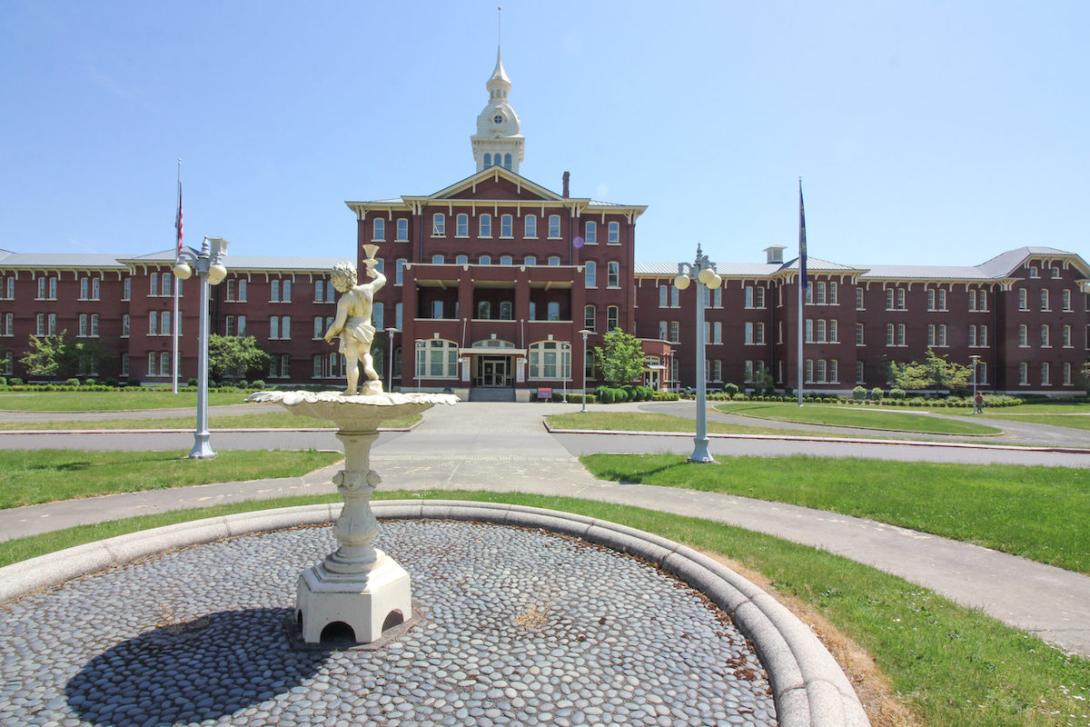
On some fronts, the Oregon Legislature took immediate action to address the state’s behavioral health and addiction crises. On another front, lawmakers avoided direct action by creating a task force to discuss solutions.
For example, lawmakers passed an expansive proposal that would make opioid overdose reversal medication more widely available in different settings, like public schools and buildings. They also passed a 40-cent monthly phone tax to pay for a new crisis hotline, 988. But other decisions will take more time to play out: They formed a task force to look at alcohol taxes and addiction programs rather than raise the beer and wine tax to pay for recovery programs.
Though the 2023 legislative session is wrapped up, Oregon remains in the throes of a complex set of behavioral health and addiction crises. Residential treatment options for people grappling with behavioral health issues are limited, with more demand for beds than availability. The opioid addiction crisis – and deaths from overdoses – are on the rise in Oregon, with lethal fentanyl widely available.
Advocates and lawmakers agree that years of work lie ahead for Oregon’s behavioral health system.
Residential treatment
Through different bills, state lawmakers have allocated money to expand residential treatment facilities for people who need mental health or addiction treatment services.
They include:
$50 million in lottery bond funding to expand residential treatment for people with severe mental illness. That came through Senate Bill 5506, an end-of-session budget proposal.
$15 million to expand facilities that treat children and adults with drug or alcohol addiction is included in Senate Bill 5525, which Gov. Tina Kotek has not yet signed.
It’s unclear how many people those budget items might help. The Oregon Health Authority officials didn’t provide the Capital Chronicle with an estimate of the number of beds they expect to add.
But lawmakers want to track where the money goes – and what the needs will be. Senate Bill 5525 requires the agency to prepare a report showing how many behavioral health facility beds the system has and how the money has expanded the system. That report is due by Feb. 1, 2025 and will go to the Legislature’s joint budget committee as the next long session starts.
“We will know how much more residential treatment capacity we need to have,” said Rep. Rob Nosse, D-Portland and chair of the House Committee on Behavioral Health and Health Care. “And we’ll either fund it or make a lot of progress towards getting it.”
In 2021, the Legislature put an historic $1.3 billion toward behavioral health for a variety of needs, such as expanding residential facilities and incentives to recruit and retain people in the behavioral health care workforce. Nosse said the state’s new spending builds upon that investment.
“None of that went away,” Nosse said. “This is a new investment on top of that.”

Oregon State Hospital
Oregon State Hospital, the state-run psychiatric residential facility in Salem and Junction City, will benefit from the Legislature’s actions, both directly and indirectly, said Amber Shoebridge, a spokesperson for the hospital.
Lawmakers earmarked $6 million for case management services to help more patients leave the hospital and return to their communities, Shoebridge said in an email.
It’s unclear how far that will go toward meeting the needs. The hospital declined to make anyone available to answer questions.
The state hospital, overseen by the Oregon Health Authority, accepts people who are “aid-and-assist” patients with pending criminal charges and in need of treatment to aid in their defense. The hospital also accepts patients who are found guilty except for insanity and sent there instead of prison.
The hospital has faced scrutiny and litigation in recent years over its inability to move patients through treatment and return them to communities in a timely manner. That’s resulted in hundreds of people languishing in jails waiting for care, sparking lawsuits by disability advocates and others. In September, a federal judge ordered the state hospital to treat and return “aid-and-assist” patients back to their communities within 90 days for misdemeanor charges, six months for felony charges and one year for violent felonies.
Community mental health
When people leave the state hospital, they receive care from community mental health programs, which operate in each of Oregon’s 36 counties.
These programs can help people before they deteriorate and end up in jail and the state hospital. They offer a mix of services, treatment and programs.
New funding for community mental health programs includes:
$7 million to expand community treatment for people with severe psychiatric illness who are under civil commitment orders.
Nearly $5 million for community mental health programs that provide treatment to people to keep them out of jail. These programs are also called jail diversion.
At the same time, providers say resources are stretched for community mental health facilities, with the state hospital discharging patients sooner than in the past, said Cherryl Ramirez, executive director of the Association of Oregon Community Mental Health Programs.
“The problem is with the faster discharges, we just don’t have the capacity in the community to place people in appropriate settings,” Ramirez said in an interview. “Especially with aid-and-assist clients, they’re much more likely to be houseless.”
Ramirez said the Legislature’s investments in residential services, community mental health programs and the 988 funding, are steps in the right direction. But she said the state needs for more staff in community settings and throughout the behavioral health system.
988 hotline
Oregonians will see a 40-cent monthly tax on their phones, including cells, starting in January to pay for the state’s 988 suicide prevention and behavioral health crisis hotline.
The service, run by the nonprofit Lines for Life in Oregon, became available in 2022 as part of a national mandate from Congress.
Under House Bill 2757, the tax revenue will first go toward the hotline’s call center. Any remaining money can pay for mobile crisis intervention teams. Those teams, set up throughout the state, send trained specialists to people having a breakdown on the streets, for example, and direct them toward services. They offer an alternative to traditional law enforcement and, combined with the 988 line, an alternative to 911 calls.
Ramirez praised the proposal as providing a stable source of funding that would help increase behavioral health care workers needed for crisis response teams.
“We need to invest a lot of funding into hiring a workforce because we need many more teams to be able to have the staffing required 24/7,” Ramirez said.
In its first year, the phone tax is expected to generate about $26 million.
Opioid overdoses
The rise in opioid overdose deaths has alarmed state officials and public health advocates, especially with fentanyl awash on the streets.
The number of deaths have more than doubled in the last several years. In 2019, 280 Oregonians died of opioid overdoses, and in 2020, that increased to 472, according to Oregon Health Authority data. Deaths spiked again in 2021, with 737 fatalities. The deaths for 2022 are not yet fully compiled. So far, the total is 631.
The bills that passed include:
- Fentanyl possession would become a class A misdemeanor, punishable by up to 364 days in jail, a $6,250 fine, or both. The move through House Bill 2645, which Kotek hasn’t yet signed, was backed by Republicans and is intended to give law enforcement tools to fight the crisis and dealers. It closes a loophole created by the passage of Measure 110, which voters approved in 2020 to decriminalize low-level drug possession and put more money toward addictions services.
- Naloxone – the lifesaving medication that stops opioid overdoses – would become more widely available in public schools and public buildings under House Bill 2395, which is also not yet signed. Under the bill, first responders like firefighters and paramedics would be able to give naloxone kits to people who face the risk of a future overdose.
- The Oregon Health Authority, Board of Education and Alcohol and Drug Policy Commission will develop education materials to teach schoolchildren about the dangers of opioids under Senate Bill 238, which Kotek has signed into law. Tony Morse, policy director of the Portland-based advocacy group Oregon Recovers, praised the bill’s passage, saying it’s needed with the alarming rise of opioid overdoses among Oregon adolescents.
Lawmakers also passed other addiction measures:
- For youth, House Bill 2767, on Kotek’s desk, would create a pathway for “recovery” schools, which help youth with drug or alcohol addiction issues, gain state approval and accreditation. Currently, Oregon only has one recovery school – Harmony Academy Recovery High School in Lake Oswego.
- House BIll 2513, still awaiting Kotek’s signature, would make administrative changes to help the state carry out the mandates in Measure 110. It would provide more staff support to the oversight council and set deadlines for an audit, among other changes.
Alcohol addiction
Lawmakers took smaller steps toward addressing the state’s epidemic of alcohol addiction, creating a task force to explore the issue.
An average of about six people a day die of alcohol-attributable causes in Oregon, according to a state report. In 2021, 2,153 people died of alcohol-related causes, including liver disease and overconsumption, state data shows.
Under House Bill 3610, Oregon would start a 20-member task force to look at alcohol prices and addiction services, with input from the liquor industry, public health officials, health care and advocates for recovery. The task force would be required to look at the tax on alcohol and funding for addiction treatment and determine whether lawmakers should consider increasing the alcohol tax to better fund addiction services. The bill, not yet signed by Kotek, would require the task force to give lawmakers recommendations by September 2024.
Advocates welcome the move as a step in the right direction.
A state report concluded that the 2019 cost of excessive drinking in Oregon totaled about $4.8 billion, including lost earnings from work and costs from vehicle crashes, jail, court cases, health care, education and human services programs.
“If you can make drinking a little bit more costly, then you have less consequences that come out of excessive alcohol use,” said Tony Morse, policy and advocacy director for Oregon Recovers, which advocates for solutions to the state’s addiction crisis. “Number two, it’s a revenue stream when we need more treatment, detox and prevention programming in Oregon. This is a funding bucket that we can use to fund these desperately needed services.”
The measure’s passage comes after failed attempts to raise alcohol taxes, including this session when Gov. Tina Kotek requested – then dropped – a request for the Oregon Liquor and Cannabis Commission to add a 50-cent surcharge to bottles of alcohol to fund mental health and addiction services.